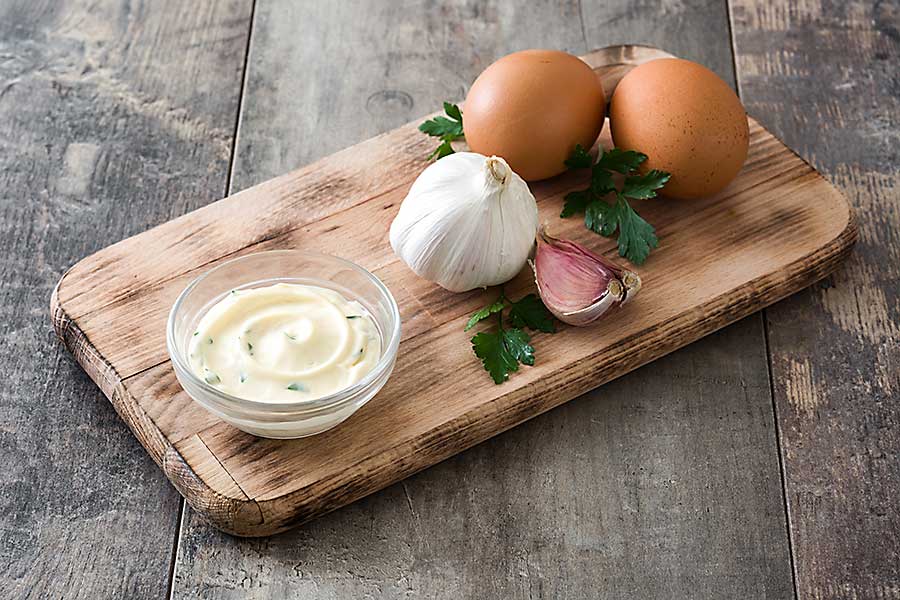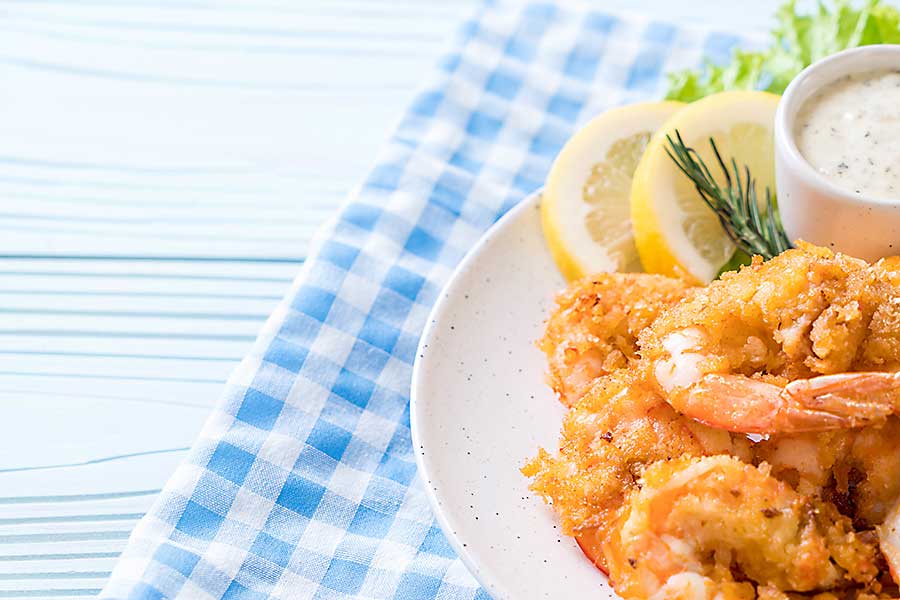Aioli
Aioli is a garlic and olive oil sauce that originated in the Mediterranean. The exact origins of the sauce are disputed, said to be either from the south of France or eastern Spain regions. The name ‘aioli’ itself is a compound of the words ‘garlic and oil’ in Catalan and Provencal languages. Aioli is characterised by its lightly spicy garlic flavour and yellowish colouring from the olive oil. It is used widely in regional cuisines of Spain (along the Mediterranean coast), in Franch cuisine (Provence region), and Italian cuisine (in Sicily and Calabria).
How to make aioli
Like mayonnaise, aioli is an emulsion. This happens when small globules of olive oil are mixed into the garlic paste. The garlic is first thoroughly crushed in a mortar and pestle along with some salt. Olive oil is then added one drop at a time and combined with the paste. It’s essential for the olive oil to be slowly added to the garlic paste so that it can spread evenly throughout the mixture. The sauce must be stirred and mashed constantly throughout the entire process until a smooth result is achieved. The end result is a fluffy, creamy, and stiff emulsion. The emulsion’s stiffness is checked by turning the mortar upside down – the sauce should remain as is and not spill out.
Traditional aioli is made by only garlic cloves and olive oil, with no other added ingredients (except salt). It is glassy, strong, and unyielding, with a sharpness from the garlic and a slight bitterness from the olive oil. Because using a mortar and pestle is extremely cumbersome, modern aioli recipes call for using a whisk or hand-held mixer.
Difference between aioli and mayonnaise
Aioli and mayonnaise have become interchangeable terms in the modern culinary scene, however, the two are very different. There is no egg or lemon juice in classic aioli recipes, unlike mayonnaise. In fact, a true aioli has only three ingredients. That said, some versions of aioli call for added egg yolk and lemon juice to make a creamier, pastier sauce. However, purists refer to this version of the sauce as being garlic mayonnaise and not aioli. The term aioli is also used by some to refer to any kind of flavoured mayonnaise, including saffron, paprika, and chilli.
What is aioli eaten with?
Aioli is used much like mayonnaise, however, traditionally there are different ways to serve the sauce depending on the region and cuisine.
- Malta – Aioli is known as ajjoli, and it is often made with crushed galleti or tomato,
- Occitan cuisine – Aioli is usually served alongside seafood or fish soup,
- Provence – Aioli is used in the festive dish known as aioli monstre. The meal is served on special occasion like patron saint days, Christmas Day, and Ash Wednesday. Aioli monstre features different types of boiled vegetables, poached fish, escargot, tuna or other seafood, and boiled eggs. Aioli is dollopped a The sauce is so strongly tied to the region of Provence that a regional newspaper was named L’Aioli,
- Spain – Aioli is known as alliolli, and usually served alongside arròs a banda or arròs negre. Grilled lamb and vegetables are often served on the side. Some varieties of alliolli also exist made with boiled quince or pear.
Private Chefs, Art of Dining
CHEFIN is a private chef platform that’s reimagining social dining.
You can easily connect with 1 of our 250 private chefs and treat your guests to restaurant-quality dining experiences in the comfort of your own home, office or chosen venue. From high-end dining to quirky social food experiences, the CHEFIN platform makes it effortless for you to access gourmet food that’s worthy of a Michelin-starred establishment.
What you get:
-
- Your very own private chef who is vetted and insured,
- A customised menu for your needs,
- 24/7 concierge support,
- Complete post-dinner cleanup,
- A fun, stress-free, and unforgettably dining experience!


